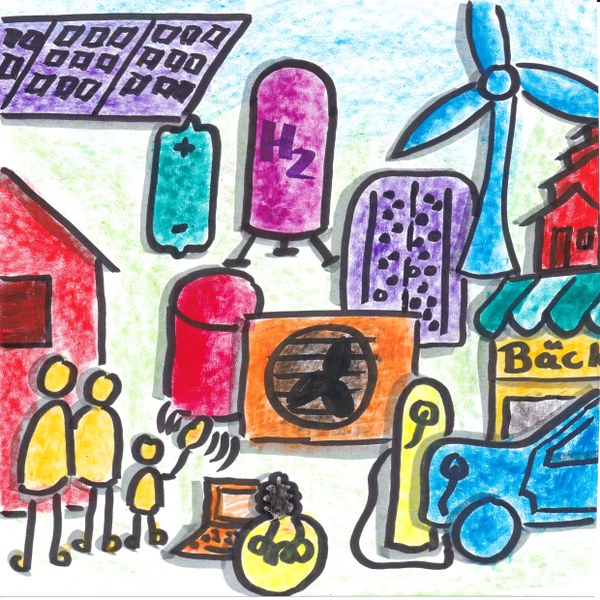Research project Digi-HyPro
Digitalised hydrogen process chain for the energy transition
In this project, the interaction between electrolyser, metal hydride storage, fuel cell, gas grid and gas consumer will be analysed and optimised by comprehensive system simulations using a digital Smart Energy Transform Box (SET Box) in order to optimally match the components for energy- and cost-efficient hydrogen storage without fossil fuels. The simulations will be verified by building a small scale experimental setup of the SET box.
Research project Digi-HyPro | |
|---|
Duration | October 2020 to September 2024 |
Funded by | dtec.bw - Digitalization and Technology Research Center of the Bundeswehr |
Project participants | - Helmut Schmidt University
- Institute of Networked Energy Systems
- Helmholtz-Zentrum hereon GmbH
- Hamburg University of Technology
|
In addition to low-cost production, the safe and long-term stable storage of hydrogen plays a central role in bridging the gap between energy production from sustainable sources and the demand from the mobility, heat and electricity sectors. Through a sector-coupled implementation of these areas, a continuous supply of energy can be achieved to bridge longer dark lulls without fossil energy sources.
At normal pressure and temperature, hydrogen is an extremely light gas and is difficult to store. For compact storage, e.g. in vehicles, a high pressure of up to 700 bar has been required up to now. Alternative liquefaction of hydrogen is energy-intensive and requires about 15-30 % of the hydrogen energy content.
An energy-efficient and compact solution to store hydrogen can be done with metal hydrides, or more precisely metal-hydrogen compounds. Compared to high-pressure hydrogen storage, twice the volumetric capacity can be achieved at much lower pressure. Especially for stationary use, e.g. in urban areas, metal hydride storage systems therefore have a much smaller space requirement. The storage of hydrogen is 100 % reversible, but requires designs tailored to the respective application with regard to storage and withdrawal capacity and suitable heat management, since heat is generated during storage and required during withdrawal.
In this project, the development and testing of a container solution for a digital Smart-Energy-Transform-Box (SET-Box) will be realised. Such a system can be used modularly - and thus scalable - as well as decentralised at different locations. Within the box, hydrogen can be produced by an electrolyser and, after passing through a membrane drying process, stored compactly and safely in a metal hydride storage tank or fed into the natural gas grid and also withdrawn as needed. For the withdrawal from the gas grid, efficient polymer-based membranes for the coarse separation of natural gas and hydrogen and again metal hydrides for the fine separation are to be tested. In addition to use in the fuel cell, the hydrogen from the intermediate storage or the gas grid can also be delivered to other systems at a higher pressure level via metal hydride compressors and used, for example, to refuel vehicles (trucks, cars, ships, etc.). The SET-Box thus enables a flexible transformation of energy and can reliably couple electricity, gas and mobility grids in a grid-serving manner. By mapping the overall concept in parallel with digital twins, the fundamental material laws and the desired application profile in the overall system can be linked across scales for the first time.
Departments, research groups and challenges related to the Digi-HyPro project:




